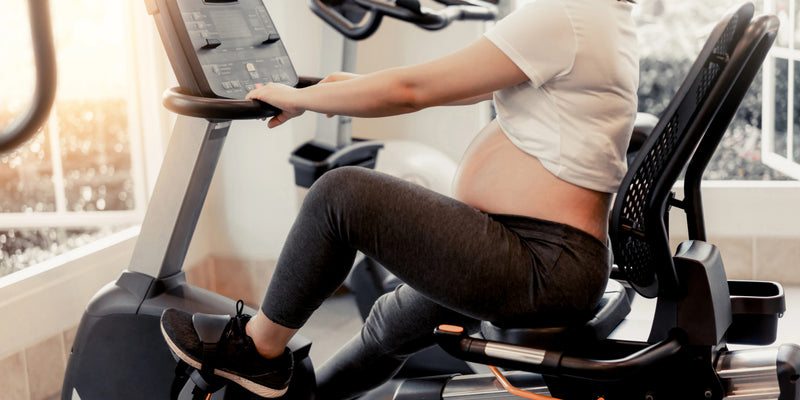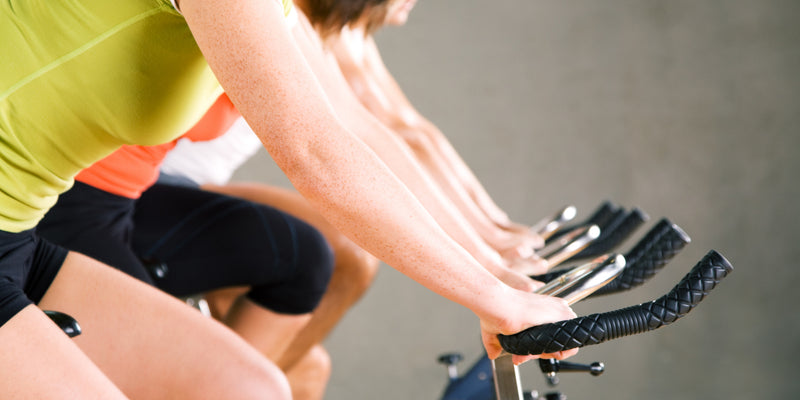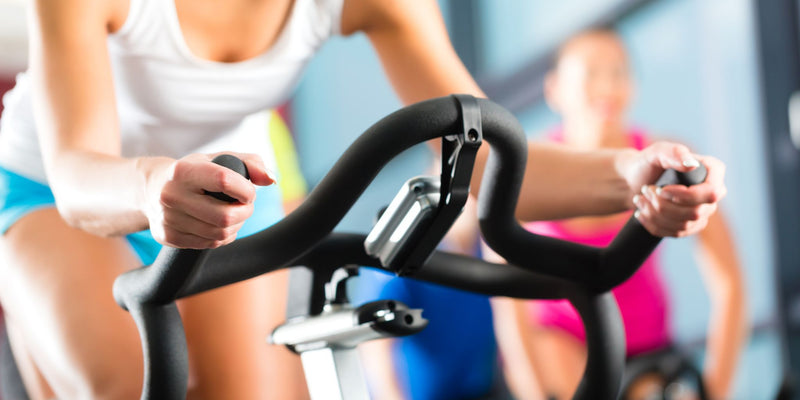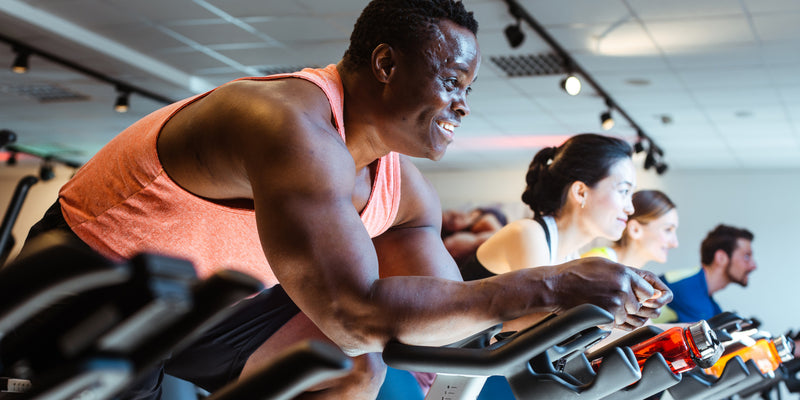As passionate cyclists, we all share the same goal: to ride and push the boundaries of our endurance. However, achieving peak performance takes more than just logging endless miles in the saddle.
What you need is a multifaceted approach that aims to truly optimize your cycling for maximum endurance. Whether you're training for your first century ride or angling for a new personal record, the insights and actionable tips you'll find here will give you the edge you need to reach the pinnacle of your cycling potential. So, get ready to go deep into the details, and learn how to pedal your way to your ultimate potential.
What Is Peak Performance?

Peak performance in cycling refers to the state of optimal physical, mental, and technical execution that allows a cyclist to achieve their highest level of performance and endurance. Key aspects include highly developed aerobic and anaerobic capacities, muscular strength and power, efficient pedaling mechanics, proper nutrition and hydration, effective recovery strategies, unwavering focus and mental toughness, optimal bike fit and technical skills. When all these elements come together, a cyclist can ride at the absolute peak of their abilities - maintaining high power outputs for extended durations, pushing through physical and mental barriers, and consistently performing at an elite level.
Achieving and maintaining peak performance requires a comprehensive, long-term approach to training, nutrition, equipment, and mindset development. But the rewards in terms of personal records, race results, and the sheer satisfaction of riding at your best are immense for dedicated cyclists.
Why Is It Important to Achieve Peak Performance in Cycling?
Achieving peak performance in cycling is vital for several reasons. Firstly, improved performance allows cyclists to reach their full potential and achieve their desired goals. Whether it's winning races or completing long distances, peak performance ensures maximum efficiency and effectiveness in every pedal stroke.
Secondly, increased endurance is a key benefit of achieving peak performance. Cyclists with optimal performance levels can sustain higher intensities for longer durations, allowing them to cover greater distances or exert more effort when required. This improves overall performance and competitiveness.
Furthermore, faster recovery is crucial for cyclists to maintain a consistent training regime and avoid overtraining. Peak performers are often more efficient at replenishing energy stores and repairing muscle damage, leading to quicker recovery times between rides and decreasing the risk of burnout.
Injury prevention is another critical aspect of peak performance. Cyclists operating at their peak are more likely to have better bike handling skills, body positioning, and muscle balance, reducing the risk of accidents and injuries. By prioritizing peak performance, cyclists can stay healthy and avoid setbacks due to preventable mishaps.
Lastly, achieving peak performance in cycling leads to overall satisfaction. Cyclists who consistently reach their performance goals experience a sense of accomplishment, which enhances their motivation, enjoyment, and dedication to the sport. The sense of self-improvement and personal growth contributes to a positive mindset and a greater overall satisfaction with the cycling experience.
What Contributes to Peak Performance in Cycling?
Peak performance in cycling is influenced by various factors, including age and fitness levels. These factors significantly impact a cyclist's recovery time and frequency of riding.
Age plays a crucial role in peak performance as older cyclists may require more recovery time compared to their younger counterparts. The body's ability to repair and recover decreases with age, leading to longer recovery periods. Additionally, older cyclists may have to adjust their frequency of riding to prevent overexertion and minimize injury risks.
Fitness levels are another essential factor in achieving peak performance. Highly fit cyclists generally have shorter recovery times due to their enhanced cardiovascular system and improved muscle endurance. They can withstand intense training sessions and recover faster for subsequent rides. Moreover, fitter individuals can ride more frequently without experiencing burnout, enabling them to accumulate more training miles and enhance their performance.
An efficient method for building endurance and improving cycling performance is polarized training. This training approach involves alternating between low and high-intensity exercise. The majority of training sessions are performed at low intensity to enhance aerobic fitness and promote recovery. Higher intensity sessions are strategically incorporated to stimulate adaptations and further increase endurance. Polarized training has been shown to be more effective than traditional training methods in improving performance and maximizing fitness gains.
In addition to cardiovascular fitness, strength exercises are crucial for cyclists. Essential strength exercises for cyclists include squats, lunges, and deadlifts to strengthen the lower body, particularly the quadriceps, hamstrings, and glutes. Core exercises like planks and Russian twists enhance stability and power transfer. Upper body exercises, such as push-ups and pull-ups, improve overall strength and control on the bike.
How to Train for Peak Performance in Cycling?

Training for peak performance in cycling requires a combination of key components and strategies. One such strategy is polarized training, which emphasizes high-intensity sessions and low-intensity recovery sessions while minimizing moderate-intensity efforts. This approach allows cyclists to maximize their training time and increase their overall fitness and performance.
Tracking and analyzing cycling data is crucial in monitoring progress and making necessary adjustments. Utilizing tools such as heart rate monitors and power meters can provide insights into training intensity and ensure workouts are targeted and effective. Analyzing data also helps identify areas of improvement and highlights patterns or trends in performance.
Optimizing training plans based on frequency adjustments is another essential component. Consistency is key in cycling training, and adjusting workout frequency allows for proper recovery and adaptation. Increasing the frequency gradually provides a balance between overload and recovery, leading to improved performance.
How to Improve Cycling Performance and Endurance?

Improving cycling performance and endurance requires a combination of training methods and exercises. One effective training method is interval training, which involves alternating periods of high-intensity effort with periods of rest or lower intensity. This helps to increase cardiovascular fitness and improve lactate threshold, enabling cyclists to ride at higher intensities for longer periods.
In addition to interval training, incorporating long slow rides into a training program is important for building endurance. These rides are done at a steady pace, typically at a lower intensity, and help to improve the body's ability to utilize fat as a fuel source. This is advantageous for longer rides or races where energy stores need to be sustained for an extended period.
Another method that can be utilized is polarized training, which involves incorporating both low-intensity and high-intensity workouts into a training program. This ensures that the body is challenged in different ways, helping to improve overall endurance capacity. By polarizing training, with the majority of workouts being at low intensity and a smaller percentage being at high intensity, cyclists can efficiently build endurance.
Takeaway
Achieving peak performance in cycling is essential for cyclists who want to reach the pinnacle of their abilities. By adopting a multifaceted approach, cyclists can unlock their true potential and consistently perform at the highest level.
The path to peak performance requires dedication, discipline, and a willingness to constantly learn and improve. From developing world-class aerobic and anaerobic fitness to mastering efficient pedaling mechanics and sharpening mental fortitude, the journey is filled with challenges, but the rewards are immense.
Cyclists who commit to this comprehensive approach will find themselves breaking personal records, winning races, and experiencing the pure joy and satisfaction that comes from riding at their absolute best. Whether you're a seasoned pro or an ambitious enthusiast, the insights and strategies outlined here provide the roadmap to help you pedal your way to your ultimate cycling potential. So, get ready to unleash your inner champion and redefine the limits of your endurance on the bike.
Renpho Health Tips
-

Spinning for Two: What Expecting Moms Need to Know About Indoor Workouts
May 28, 2024
Read more >
-

Gamify Your Gym Time: Strategies to Make Your Workouts More Engaging and Fun
May 17, 2024
Read more >
-

Pedal Your Way to Fitness: Exploring the Incredible Benefits of Exercise Bikes
May 8, 2024
Read more >
-

Game On! How Gamification Motivates and Engages in Exercise
April 29, 2024
Read more >
-

Ergometer for the Home: Is It Right for You?
March 4, 2024
Read more >
